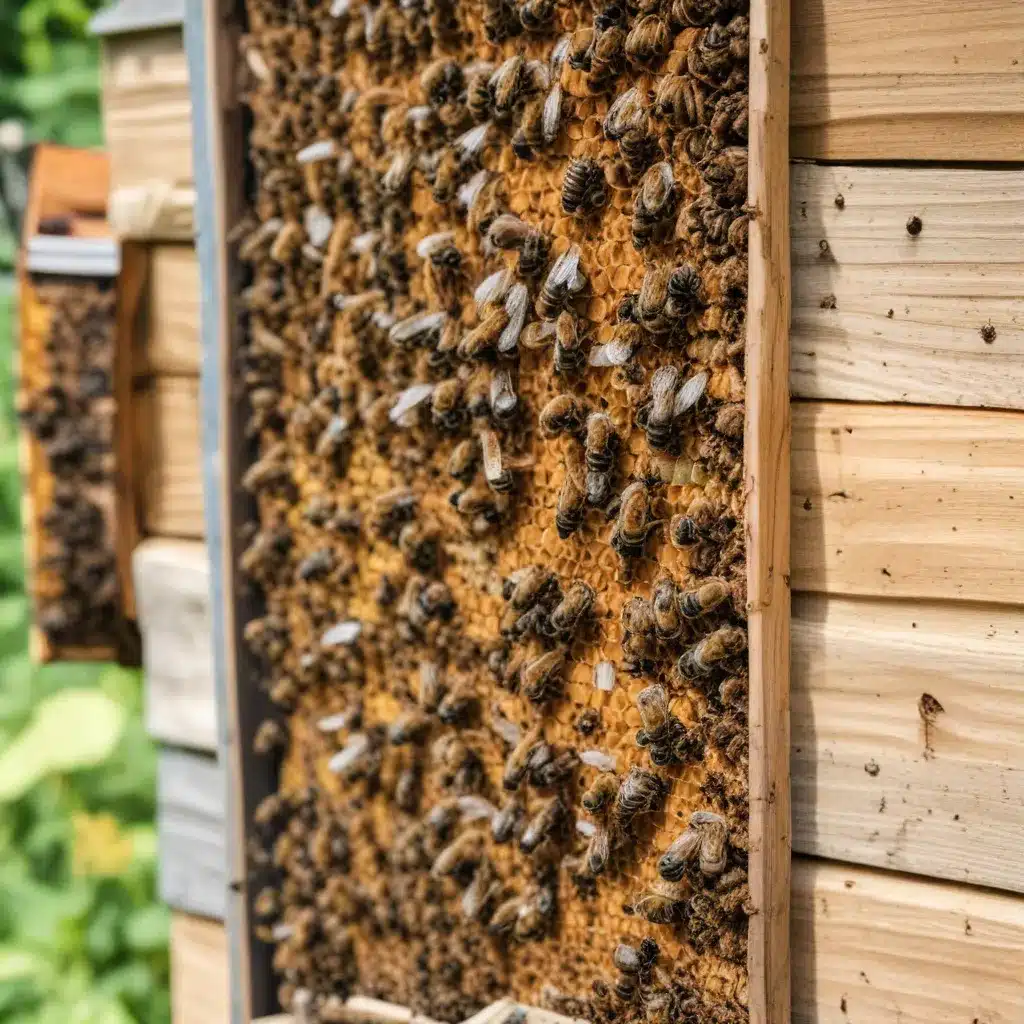
Bees are essential pollinators, playing a crucial role in the health of our ecosystems and the abundance of our gardens. Backyard beekeeping is a rewarding hobby that allows you to support these vital creatures while enjoying the sweet rewards of homemade honey and beeswax. At Crooked Pines Farm, we’ve embraced the joys of raising honeybees and want to share our experiences to inspire you to do the same.
The Benefits of Backyard Beekeeping
Pollination and Ecosystem Support
One of the primary reasons to keep honeybees is their invaluable contribution to pollination. Bees are responsible for pollinating over 75% of flowering plants and crops, including many of the fruits and vegetables we rely on. By establishing a hive on your homestead, you’ll be providing a vital service to the surrounding environment, helping to maintain the delicate balance of our ecosystems.
Honey Production and Byproducts
Of course, the sweet, golden reward of keeping bees is the honey they produce. Each year, your hive can yield several gallons of raw, unprocessed honey that you can enjoy in your cooking, baking, and even as a natural remedy. But honey is just the start – bees also produce beeswax, which can be used to make candles, lip balms, and a variety of other homemade products.
Environmental Sustainability
Keeping bees is an eco-friendly hobby that supports sustainability. Bees are essential pollinators, and by maintaining a healthy hive, you’re contributing to the overall health of your local environment. Additionally, backyard beekeeping reduces your reliance on commercial honey sources, which can be a more sustainable and ethical choice.
Preparing for Backyard Beekeeping
Assessing Your Property
Before you dive into beekeeping, it’s essential to assess your property and ensure it can accommodate a hive. Consider factors like available space, access to sunlight, and proximity to water sources. Ideally, you’ll want to position your hive in a sheltered area, away from high-traffic zones, to provide the bees with a safe and secure environment.
Selecting the Right Hive
There are several types of beehives to choose from, each with its own unique characteristics. The Langstroth hive is a popular choice for beginners, as it’s straightforward to manage and maintain. The Top Bar hive, on the other hand, allows bees to build their comb naturally, which can be a more hands-off approach. Regardless of the hive you choose, be sure to invest in quality equipment that will protect your colony and make harvesting honey a breeze.
Obtaining Necessary Equipment
In addition to the hive itself, you’ll need a few essential pieces of equipment to get started, such as a smoker, bee suit, and hive tool. These items will help you safely inspect and manage your colony, ensuring the health and well-being of your bees. Don’t forget to source any supplementary feeders or varroa mite treatments that may be necessary, depending on your local climate and conditions.
Establishing a Honeybee Colony
Acquiring Bees
There are several ways to obtain your first honeybee colony. You can purchase a nuc, which is a small, pre-established hive, or you can start with a package of bees and a queen. Another option is to capture a swarm that has settled on your property, although this requires some additional expertise. Whichever route you choose, be sure to source your bees from a reputable local beekeeper, as they’ll be best equipped to provide advice and support tailored to your region.
Installing the Hive
Once you have your bees, the next step is to properly install the hive. This involves carefully transferring the frames or comb into the new hive, ensuring the queen is present and healthy, and providing the colony with access to food and water. Be patient and gentle during this process, as the bees will need time to acclimate to their new home.
Monitoring and Maintaining the Colony
Ongoing hive maintenance is essential for the success of your backyard beekeeping venture. This includes regularly inspecting the hive for signs of disease or pests, providing supplemental food during lean seasons, and harvesting honey at the appropriate times. By staying vigilant and responsive to the needs of your colony, you’ll be rewarded with a thriving, productive hive.
Harvesting and Using Honeybee Products
Collecting Honey
The highlight of backyard beekeeping is the annual honey harvest. Typically, this occurs in the summer months when the bees have had time to fill the hive’s supers (upper boxes) with excess honey. By gently removing these frames and extracting the honey, you’ll be able to enjoy the sweet, flavorful results of your bees’ hard work.
Extracting and Storing Honey
Extracting honey can be done using a honey extractor, which spins the frames to remove the honey. Alternatively, you can use a crush and strain method, which involves manually crushing the comb and straining the honey through a fine mesh. Once extracted, be sure to store your honey in airtight containers to preserve its freshness and flavor.
Utilizing Beeswax and Other Byproducts
In addition to honey, your beehive will produce beeswax, which can be used to create a variety of useful products. From lip balms and candles to food wraps and furniture polish, beeswax is a versatile and natural material with countless applications. Explore the creative ways you can put this valuable resource to use on your homestead.
Backyard beekeeping is a rewarding and essential hobby that can bring countless benefits to your homestead and the surrounding environment. By establishing a thriving honeybee colony, you’ll not only enjoy the sweet rewards of homemade honey and beeswax but also play a vital role in maintaining the health of our precious pollinators. If you’re ready to embark on this exciting journey, be sure to connect with your local beekeeping community and start planning your new backyard apiary today. Visit Crooked Pines Farm for more information and inspiration on all things homesteading and farm life.


